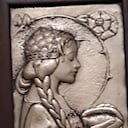In which year did James Plimpton invent the 4 Wheel Roller Skates?
The first patented roller skate was introduced in 1760 by Belgian inventor John Joseph Merlin. His roller skate wasn't much more than an ice skate with wheels where the blade goes, a style we would call inline today. They were hard to steer and hard to stop because they didn't have brakes and, as such, were not very popular.
In the 1840s, Meyerbeer's Opera, Le prophète featured a scene in which performers used roller-skates to simulate ice-skating on a frozen lake set on stage. The result was to popularize roller skating throughout the Continent. As ice skaters subsequently developed the art of figure skating, roller skaters wanted the ability to turn in their skates in a similar fashion.
In 1863, James Plimpton from Massachusetts invented the "rocking" skate and used a four-wheel configuration for stability, and independent axles that turned by pressing to one side of the skate or the other when the skater wants to create an edge. This was a vast improvement on the Merlin design that was easier to use and drove the huge popularity of roller skating, dubbed "rinkomania" in the 1860s and 1870s, which spread to Europe and around the world, and continued through the 1930s. The Plimpton skate is still used today.
More Info:
en.wikipedia.org


